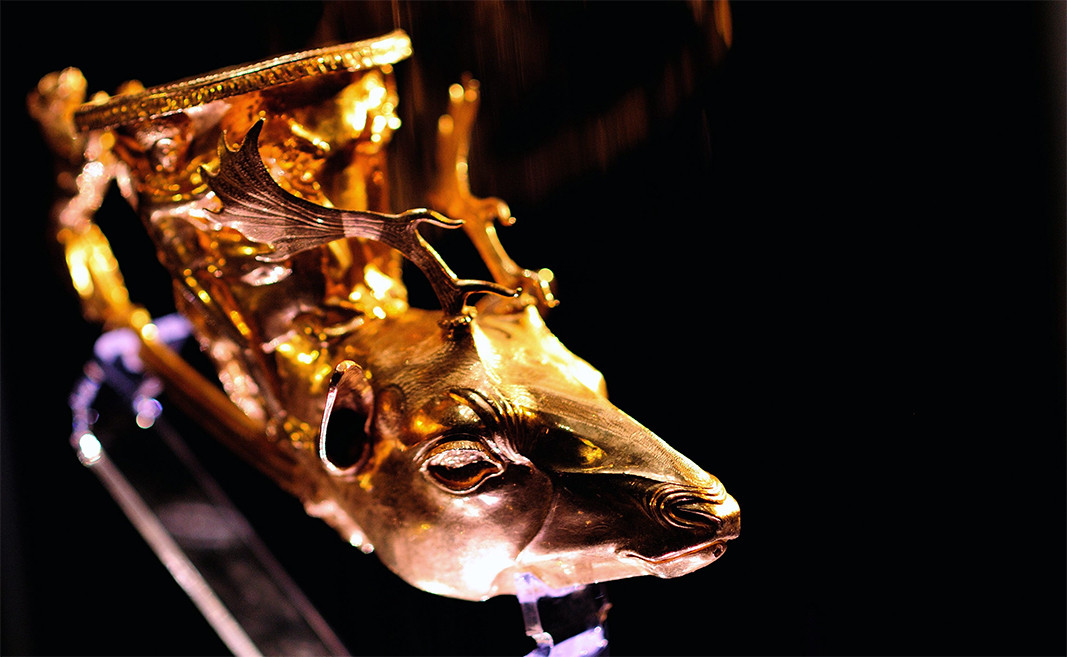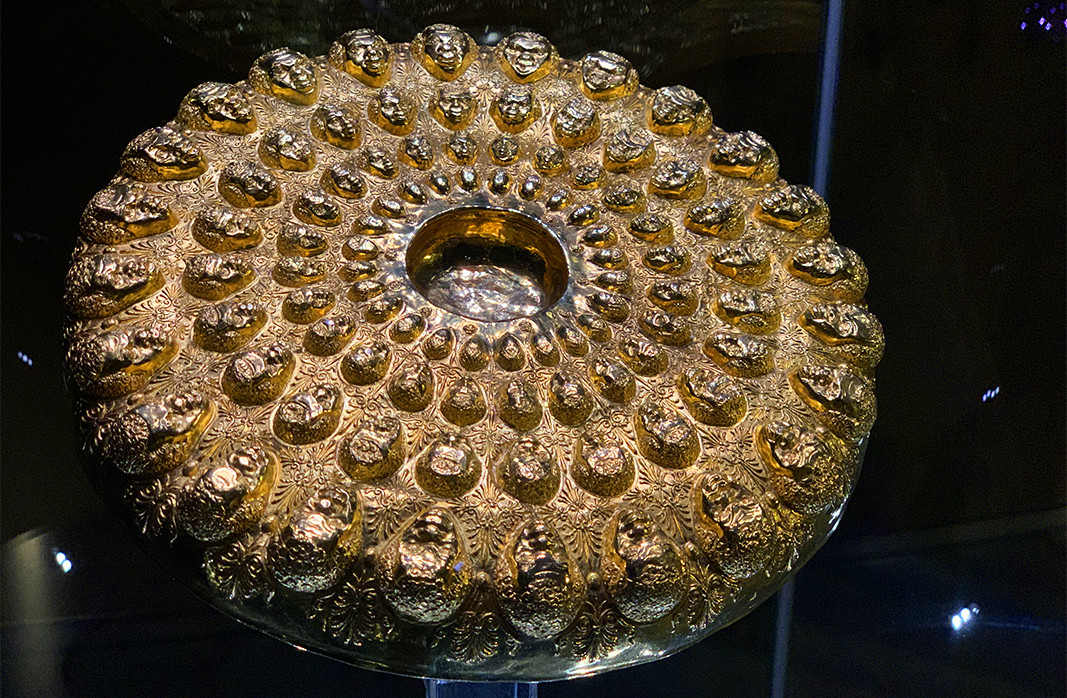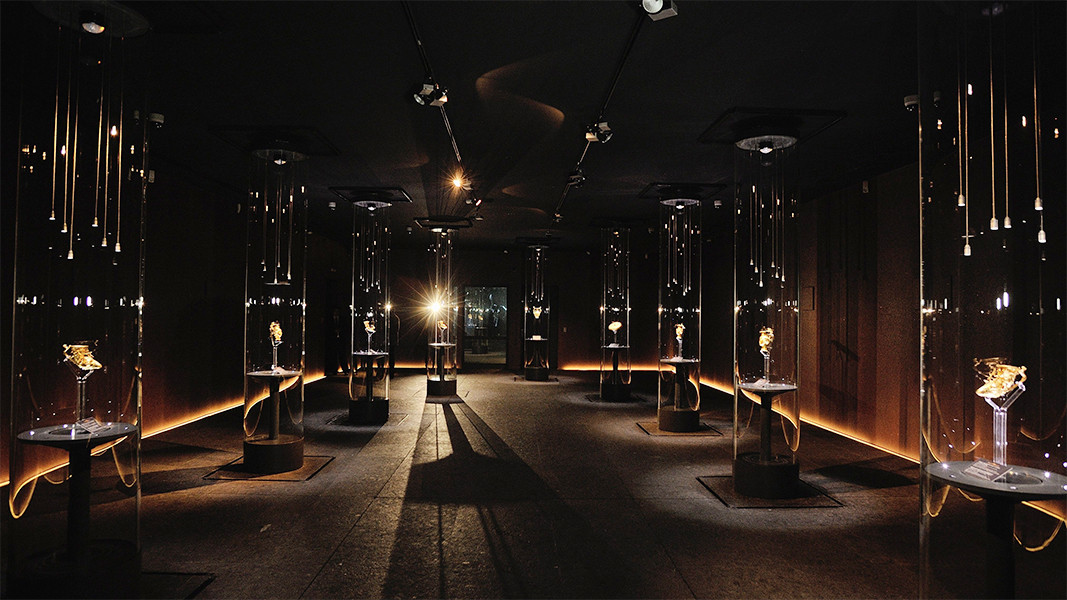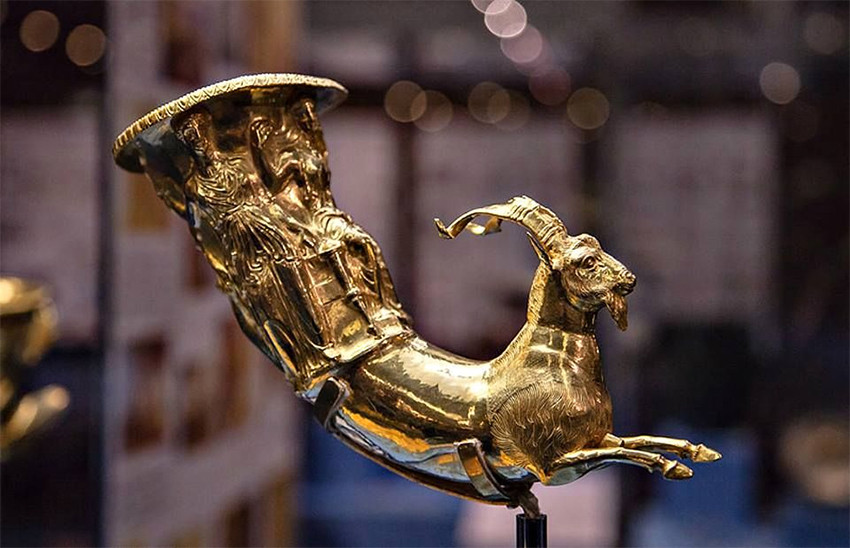The Panagyurishte gold treasure, found by accident buried in the ground more than 70 years ago, vividly showcases Panagyurishte itself but also the whole of Bulgaria. The treasure was crafted in the 4th or the beginning of the 3rd century BCE and has remained arguably the most beautiful set of gold tableware in the world, a masterpiece of Thracian art of invaluable artistic worth.

The treasure consists of 9 elements – rhytons, a phiala and an amphora made of pure gold, weighing a total of more than 6 kgs. They are lavishly decorated with mythological figures and ornaments. Each of them was used by the Thracians for feasting, for religious rites and rituals connected with Thracian mythology. The four thytons are shaped either as animal heads, or parts of the bodies of animals – ram, billy-goat, two have roe-deer heads. Near the top of the rhytons mythological scenes are depicted.
Who did the Panagyurishte gold treasure belong to?

Could it have belonged to one of the Odrysian kings? What compelled them to bury it? These are questions we shall probably never find out the answers to. And though the treasure has come to be named after the town where it was found – Panagyurishte – it is kept at the National History Museum in Sofia. However, every year, for at least one month, the original gold artifacts travel to Panagyurishte where a very expensive, high-security hall has been built for them inside the local museum of history.
As of 1 September the Panagyurishte gold treasure will “go home”

On all days when the original is not in Panagyurishte, there is an exact replica of the 22-karat gold artifacts on display there, made and marked by experts from the National History Museum.
The vault, which cost almost 6 million Leva (EUR 3 million), is stylish but also functional and extremely secure.
“The vault opened on 16 April, 2012, so during the time the treasure will be on display here this year we shall mark its 10th anniversary with a documentary exhibition, tracing the vault’s construction – from the drawing board to the fittings,” says Irina Boteva, chief curator of the History Museum in Panagyurishte:

“When the vault was opened in 2012, we created conditions for the return of the original Panagyurishte gold treasure, 63 years after it was discovered. After a series of agreements, the decision was made to build an exhibition hall that will meet the highest security and modern exposition requirements. As part of the donation by patrons of culture, two gold replicas were made – one was handed over to the National History Museum to be displayed there when the original is not there, and the other is part of the permanent exhibition of our museum. The idea for the vault was to turn it into a temple for the Panagyurishte treasure. First is the information hall where visitors can get acquainted with the history of its discovery. Then they pass through a kind of maze, where, inside separate glass containers, each with its own lighting, they can see each of the artifacts of the treasure. The containers were designed in Germany with the idea that each element must be inside its own glass container so that it can be viewed from all sides. That is important because each of the artifacts has so many different figures and ornaments that, if they are together, it is impossible to be able to see them all clearly.”

1,500 cubic metres of special concrete was used in the making of the treasure’s unique home, achieving the highest level of security that meets the highest possible museum security standards. The unique exposition has so far been seen by more than 920,000 tourists.
The vault’s multimedia area features a map of the world, pinpointing all of the countries where the Panagyurishte treasure has been on display:
“The map is constantly updated, but what strikes visitors is the enormous interest in Thracian art in Japan. That is the reason why the treasure has travelled to Japan several times. But everywhere it is shown the treasure evokes an enormous amount of interest.”
The original Thracian masterpieces will be on display in Panagyurishte until 17 October.
Photos: BGNES, EPA/BGNES, library
A protest is being held tonight in front of the Ivan Vazov National Theatre against the premiere of the play Arms and the Man by Bernard Shaw, staged by John Malkovich , which will open at 7 p.m. "This play should not be staged at the National..
A Bulgarian production company will build a new film center worth EUR 15 million in the Sofia-Bozhurishte Industrial Park. The film center will span over 30,000 square meters. The contract for the sale of the land will be signed at the end of..
The first EU Songbook has been released, featuring six songs from each of the 27 EU member countries and Ode to Joy, the anthem of the European Union, reports BTA. The Songbook, a non-profit Danish initiative, has no financial ties to the EU,..

+359 2 9336 661
